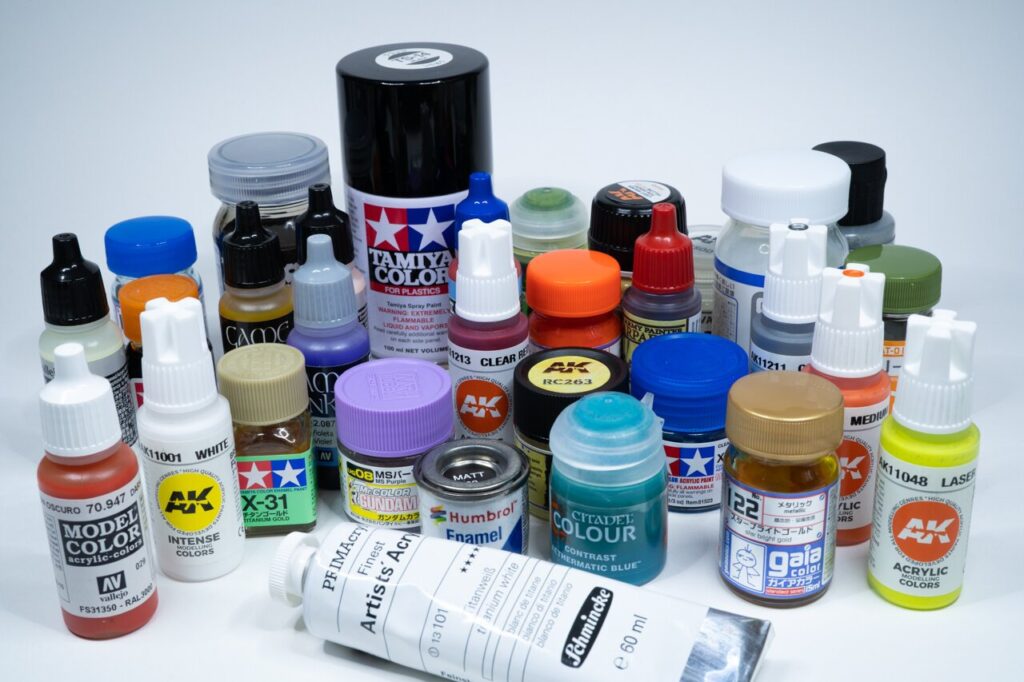The best paint for plastic models is acrylic. Its versatility, durability, and ease of use make it a popular choice among model hobbyists. Acrylic paint adheres well to plastic surfaces, resulting in a smooth and professional finish. Additionally, it dries quickly, allowing for faster project completion. When considering what is the best paint for plastic models, acrylic is undoubtedly a top contender for achieving stunning results. Explore the world of acrylic paints for your next model painting project and watch your creations come to life with vibrant colors and precision.
What is the Best Paint for Plastic Models
Welcome, aspiring model builders and hobby enthusiasts! If you have ever delved into the exciting world of plastic model kits, you know that one of the most crucial decisions you’ll face is choosing the right paint. The perfect paint can bring your plastic models to life, adding vibrant colors and intricate details that make your creations truly stand out. In this comprehensive guide, we will explore the best paints for plastic models, helping you make informed decisions and take your model-building skills to the next level.
The Importance of Choosing the Right Paint
Before we dive into the specifics of the best paint options for plastic models, let’s first understand why choosing the right paint is so crucial. The type of paint you use can significantly impact the final look and durability of your model. Not all paints are created equal, and using the wrong type can lead to issues such as poor adhesion, peeling, or uneven coverage.
When it comes to painting plastic models, you want a paint that adheres well to the surface, dries quickly, and provides a smooth finish. The best paint should also offer a wide range of colors to suit your creative vision.
Types of Paint for Plastic Models
1. Acrylic Paint
Acrylic paint is a popular choice among model builders due to its versatility and ease of use. It dries quickly, can be thinned with water or acrylic thinner, and is available in a wide range of colors. Acrylic paint is also non-toxic, making it suitable for model builders of all ages.
One of the key advantages of acrylic paint is its ability to adhere well to plastic surfaces without the need for a primer. This makes it a convenient option for beginners who are just starting their model-building journey.
2. Enamel Paint
Enamel paint is another common choice for painting plastic models. It offers a glossy finish and is known for its durability once fully cured. Enamel paint typically requires a longer drying time compared to acrylic paint and needs to be thinned with enamel thinner for best results.
While enamel paint can be more challenging to work with due to its longer drying time and stronger odor, it is a great option for model builders looking for a professional finish on their plastic models.
3. Lacquer Paint
Lacquer paint is a high-quality paint option that provides a smooth, durable finish on plastic models. It offers excellent adhesion and coverage, making it ideal for intricate detailing and airbrushing techniques. Lacquer paint dries quickly and is resistant to scratches and fading.
Due to its strong fumes and toxic nature, lacquer paint requires proper ventilation and precautions when using. However, the final results achieved with lacquer paint can be truly stunning, making it a favorite among experienced model builders.
Factors to Consider When Choosing Paint
When selecting the best paint for your plastic models, there are several factors to consider to ensure you achieve the desired results:
1. Surface Preparation
Before painting your plastic models, it’s essential to prepare the surface properly. Clean the parts thoroughly to remove any grease or debris that may affect paint adhesion. Some model builders prefer to prime the surface with a plastic primer to enhance paint adhesion and create a smooth base for painting.
2. Color Selection
Choose paint colors that align with your vision for the finished model. Consider the color scheme, detailing, and overall aesthetic you want to achieve. Having a variety of colors in your paint collection allows you to add depth and realism to your plastic models.
3. Application Method
Decide on the preferred method of paint application based on your skill level and the level of detail you want to achieve. Options include brush painting, airbrushing, or spray painting. Each method has its own advantages and challenges, so choose the one that best suits your abilities and project requirements.
4. Finishing Techniques
After applying the base coat of paint, consider using finishing techniques such as weathering, dry brushing, or decals to enhance the appearance of your plastic models. These techniques can add realism and depth to your creations, taking them to the next level.
Recommended Paint Brands for Plastic Models
When it comes to choosing the best paint for your plastic models, several trusted brands offer high-quality products that cater to model builders of all skill levels. Some popular paint brands include:
1. Tamiya
Tamiya is a well-known brand in the model-building community, offering a wide range of acrylic and enamel paints specifically designed for plastic models. Their paints are known for their high quality, vibrant colors, and excellent coverage.
2. Testors
Testors is another reputable brand that provides a variety of enamel and lacquer paints suitable for plastic models. Their paints offer durability, smooth finishes, and compatibility with various application methods.
3. Vallejo
Vallejo is a popular choice among model builders for its extensive line of acrylic paints in unique colors and formulations. Their paints are known for their ease of use, quick drying time, and compatibility with airbrushing techniques.
Tips for Painting Plastic Models
As you embark on your painting journey with plastic models, here are some tips to help you achieve professional-looking results:
1. Practice on Spare Parts
Before painting your main model, practice on spare parts or old models to familiarize yourself with the paint and application techniques. This will help you refine your skills and avoid mistakes on your final project.
2. Thin Your Paint Appropriately
Ensure your paint is thinned to the correct consistency for the chosen application method. Thinning your paint too much or too little can affect coverage, adhesion, and the final finish of your plastic models.
3. Work in Thin Layers
Apply paint in thin, even layers to prevent drips, clumping, or uneven coverage. Building up the color gradually allows for better control and a smoother finish on your plastic models.
4. Allow Sufficient Drying Time
Give each layer of paint enough time to dry fully before applying additional coats or handling the model. Rushing the drying process can result in smudges, fingerprints, or imperfections in the paint finish.
In Conclusion
Choosing the best paint for your plastic models is a critical step in creating captivating and visually striking masterpieces. By considering factors such as paint type, color selection, application methods, and finishing techniques, you can elevate your model-building skills and bring your creative vision to life.
Experiment with different paints, techniques, and styles to discover what works best for your projects. Remember that practice and patience are key to mastering the art of painting plastic models. With the right paint and a touch of creativity, your models will truly shine on display.
Happy painting, and may your plastic models inspire awe and admiration in all who behold them!
Best Paints for Plastic Models – A Paint Guide by Lincoln Wright of Paint on Plastic
Frequently Asked Questions
What factors should I consider when choosing paint for plastic models?
When selecting paint for plastic models, consider the type of plastic, the desired finish, and the application method. Some paints may adhere better to certain types of plastics, while others may offer specific finishes like matte or glossy. Additionally, consider whether you will be airbrushing or hand-painting the model, as this can influence your choice of paint.
Can I use acrylic paint on plastic models?
Yes, acrylic paint is a popular choice for painting plastic models due to its versatility, fast drying time, and ease of use. Acrylic paints are available in a wide range of colors and can be thinned with water or other mediums for airbrushing or hand-painting applications.
Are there specific paints designed specifically for plastic models?
Yes, there are paints specifically formulated for use on plastic models. These paints often have adhesion promoters that help them bond better to plastic surfaces, resulting in a more durable finish. Brands like Tamiya, Vallejo, and Testors offer a variety of paints designed specifically for model-making.
What is the best way to apply paint to plastic models for a professional-looking finish?
To achieve a professional-looking finish on plastic models, it is recommended to apply thin, even coats of paint. Start with a primer to improve paint adhesion and provide a smooth base. Use techniques like airbrushing or careful hand-painting to avoid drips or brush marks. Allow each layer to dry thoroughly before applying additional coats for a smooth and even finish.
Final Thoughts
When it comes to choosing the best paint for plastic models, acrylic paints are a popular choice due to their versatility and durability. They adhere well to plastic surfaces and offer a wide range of colors and finishes. Additionally, enamel paints are also suitable for plastic models, providing a glossy and more durable finish. Experimenting with different brands and types can help you determine what works best for your specific project. Consider the compatibility with the plastic material and desired outcome when selecting what is the best paint for plastic models.
 home depot coupons moving helping customers save on essential home supplies
home depot coupons moving helping customers save on essential home supplies 
